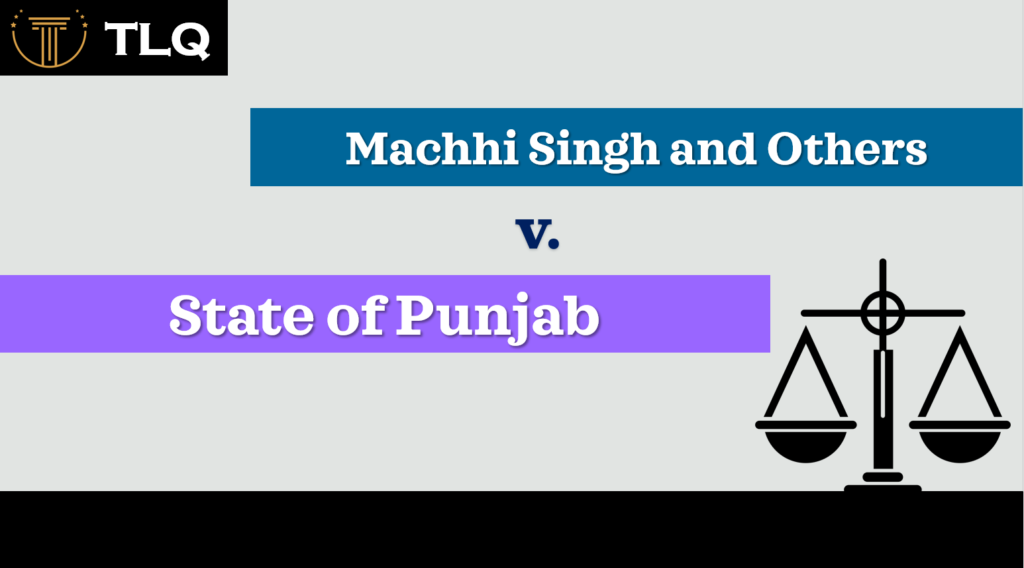“Minerva Mills v. Union of India” [1]is a landmark constitutional case in India that deals with the scope of judicial review, the separation of powers, and the limitations on Parliament’s power to amend the Constitution. The Supreme Court of India heard the case. Here is a summary of the case with the requested details:
Dates of Decisions:
The case was decided on August 31, 1980 (Minerva Mills v. Union of India (1980). A subsequent decision regarding the case was given on July 9, 1981 (Minerva Mills v. Union of India (1981).
Parties Involved: Petitioner: Minerva Mills Ltd. Respondent: Union of India
Procedural History[2]:
The case originated as a writ petition filed by Minerva Mills Ltd. challenging certain provisions of the 42nd Amendment Act, 1976, and certain sections of the Textile Undertakings (Taking Over of Management) Act, 1983. The case was initially heard by a Constitution Bench of the Supreme Court.
Facts:
The 42nd Amendment Act, of 1976, passed during the period of the Internal Emergency, made significant changes to the Constitution of India. It amended several provisions and curtailed the power of the judiciary to review constitutional amendments.
The Textile Undertakings (Taking Over of Management) Act, 1983, was enacted to provide for the taking over of the management of certain textile undertakings.
Issues:
Whether the provisions of the 42nd Amendment Act, 1976, which curtailed the power of judicial review, were constitutional.
Whether the provisions of the Textile Undertakings Act, 1983, were valid.
Holding:[3]
The petitioners, which included Minerva Mills Ltd., challenged the constitutional validity of several provisions of the 42nd Amendment Act on the grounds that they violated the basic structure of the Constitution and the basics of the rule of law.
The Supreme Court, in its judgment, held that while the Parliament has the power to amend the Constitution, this power is not unlimited. The Court reiterated the concept of the “basic structure” of the Constitution, which had been established in the earlier case of Kesavananda Bharati v. State of Kerala (1973). According to this concept, certain fundamental features of the Constitution, such as judicial review, separation of powers, and the dignity of the individual, are beyond the amending power of the Parliament.
The Court struck down some of the provisions of the 42nd Amendment Act, including those that sought to curtail judicial review and give primacy to Directive Principles over Fundamental Rights. The Court emphasized that the balance between Fundamental Rights and Directive Principles is essential for the constitutional scheme and that both are equally important and must be harmonized.
The Supreme Court held that some provisions of the 42nd Amendment Act, 1976, were unconstitutional as they violated the basic structure of the Constitution, and therefore, the power of judicial review was an essential feature of the Constitution that could not be abrogated.
The Court struck down certain sections of the Textile Undertakings Act, of 1983, as they violated the principles of natural justice.
Reasoning and Rationale:
The Court, led by Chief Justice Y.V. Chandrachud[4], emphasized that the power of judicial review was an essential feature of the Constitution, forming its bedrock. Any amendment that destroys or abrogates this essential feature would violate the Constitution itself.
The Court also articulated the doctrine of “basic structure,” which refers to the essential elements of the Constitution that cannot be altered by amendments. The amendments that go beyond the limits of this basic structure can be struck down by the judiciary.
The Court held that certain sections of the Textile Undertakings Act, 1983, violated the principles of natural justice and fairness.
Impact:
The Minerva Mills case reinforced the doctrine of the “basic structure”[5] and the significance of the separation of powers in the Indian Constitution. It established that Parliament’s amending power is not unlimited and that any amendment that destroys or alters the basic features of the Constitution can be invalidated by the judiciary.
Please note that while this summary provides an overview of the case, the original case documents and legal analyses provide a more detailed understanding of the arguments, reasoning, and implications of the case.
Reference(s):
[1] https://indiankanoon.org/doc/1939993/
[2] https://blog.ipleaders.in/minerva-mills-vs-union-india-significant-case-india-forgotten/#:~:text=Judgment%3A,which%20restricted%20the%20Judicial%20Review.
[3] https://lawcirca.com/minerva-mills-v-union-of-india-basic-structure-parliaments-power-to-amendment-and-power-of-judicial-review/
[4] https://constitutionnet.org/vl/item/basic-structure-indian-constitution
[5] https://byjus.com/free-ias-prep/landmark-cases-relating-basic-structure-constitution/




